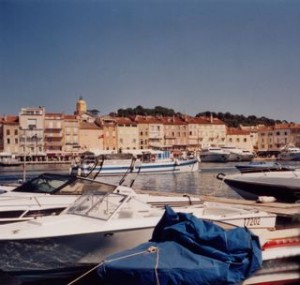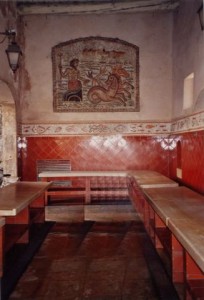How to Enjoy the Summer in Japan
The summer in Japan is incredibly hot and humid because of its topography. We also have Tsuyu, a rainy season, starting around the middle of June, and it lasts about a month. We have a lot of moisture in the air. For people from the West, where it is hot but very dry in summer, the Japanese climate can be a torture.
But if you know some tips, you may find a lot of fun in visiting Japan in summer.
【 Latitude of main cities】
| Stockholm | 51.30 |
| London | 59.19 |
| Paris | 48.52 |
| Marseilles | 43.19 |
| Rome | 41.53 |
| New York | 40.45 |
| Madrid | 40.25 |
| Lisbon | 38.44 |
| Athens | 38.00 |
| San Francisco | 37.45 |
| Tokyo | 35.40 |
| Los Angeles | 34.01 |
【 Average Temperatures in Tokyo and Paris】
| Jan | Feb | Mar | Apr | May | Jun | Jul | Aug | Sep | Oct | Nov | Dec | ||
| Tokyo | |||||||||||||
| Average temperatures High Low Precipitation |
4.7 9.5 0.5 45.1 |
5.4 10.0 1.2 60.4 |
8.4 13.0 4.2 99.5 |
13.9 18.4 9.8 125.0 |
18.4 22.7 14.5 138.0 |
21.5 25.3 18.4 185.2 |
25.2 28.9 22.2 126.1 |
26.7 30.8 23.6 147.5 |
22.9 26.7 19.9 179.8 |
17.3 21.2 13.9 164.1 |
12.3 16.6 8.4 89.1 |
7.4 12.1 3.3 45.7 |
|
| Jan | Feb | Mar | Apr | May | Jun | Jul | Aug | Sep | Oct | Nov | Dec | |
| Paris | ||||||||||||
| Average temperatures High Low Precipitation |
3.3 6.0 0.9 52.2 |
4.0 7.4 1.3 44.9 |
6.6 12.2 3.6 46.0 |
9.6 15.8 6.3 55.0 |
13.3 19.7 9.5 57.8 |
16.4 22.9 12.7 46.6 |
18.2 24.6 14.5 48.4 |
17.8 24.0 14.3 57.2 |
15.3 21.1 11.9 52.0 |
11.2 15.6 7.9 49.7 |
6.6 10.0 4.5 70.8 |
4.3 6.6 2.0 53.2 |
Traditional items
Yukata
The yukata is an informal kimono for summer wear. It is used for relaxation and sleeping wear. It is made of light cotton.
Kimono, in general, is not affordable, and the yukata was once not reasonable, either. However, in recent years kimono makers have been trying to retrieve their popularity and been so far successful. The yukata is now available at a reasonable price, and it is also designed to be easy to wear. So every summer more and more people wearing a yukata are seen in the street, especially at summer festivals. It is now a trend among the young to have the latest yukata fashion every summer.
Geta and Zori
Geta are Japanese wooden clogs raised off the ground by two wooden supports under the sole, and Zori are Japanese-style sandals. Both are accompaniments of kimono. Of course, you can have them on without wearing a kimono, but don’t have a kimono on without them! My husband is using zori in the apartment in Paris. He says it was hard to get used to wearing them but now it is very comfortable. For westerners who always have shoes on, it is good exercise for their feet!!!
Uchiwa and Sensu
A uchiwa is a round, flat paper fan with a bamboo handle. It is usually used for fanning oneself or a fire. On the other hand, a sensu is a folding fan made of paper on a bamboo frame. It is usually with a decorative picture design or calligraphic character on it.
Furin
Furin are wind chimes made of metal, porcelain, or bamboo. They are often hung under the eaves of a house, where they can catch the summer breeze. The sound of a furin makes you feel cool and forget the heat of the summer.
Sudare
Sudare are bamboo blinds. They are used to shut the heat out letting a comfortable wind in.
Tatami
Tatami are the straw mats, which cover the floor of Japanese room. They are usually rectangular in shape and are made of tightly woven rice-straw and covered with woven rushes with the edges hemmed with cloth. It is very comfortable to sleep on in summer. I also found some tatami goods for souvenirs.
Amenity goods
Drugstores in Japan are the place where you can find some weird but useful goods. Even if you have nothing to buy, you may fall in a fit of buying some. Explore the drugstores in Japan!!!
Aburatorigami
Aburatorigami is “face oil blotting paper.” It is a necessity for Japanese women. Ask your Japanese female friend if she has some in her cosmetics pouch!!
Some brands have a nice decorative picture. They use special Japanese paper used in the process of gold leaf pounding. More details at a pioneer company’s official site. click here.
Asewaki-pat
Asewaki-pat is a patch for absorbing sweat in the armpits.
Ashi-sokai-sheet
Ashi-sokai-sheet is a patch for cooling and refreshing your feet and legs. It really works, so we have a big stock of “ashi-sokai-sheet. More effect is expected when it is cooled well in a fridge. Don’t scream when you put it on your feet!!
Other unique goods
To refresh your eyes
A home sauna
To protect ourselves from mosquitoes.
To make a shade.
Japanese women don’t like to have suntan!
Foods and drinks
Sports Drinks
One thing I miss a lot in France is “sports drinks.”
Amino supli : Amino value : Aquarius
Pocari Sweat:
Some foreign friends in Japan say they don’t want to drink it because it says ‘sweat.’ But it is really refreshing. Try it. It is everywhere.
Iced coffee.
Somen: somen are very thin white noodles. It is usually served in a large glass bowl of icy water.
Kakigoori (Shaved ice).
Beer Garden
As the summer comes, ‘beer gardens’ appear on the flat roof of buildings. Office workers get there to have beer and cool down after work.
Edamame is a relish for beer in Japan. It is also known for the effect to help decompose alcohol.
Summer Festivals
We have many traditional activities during the summer, such as a fireworks show, summer festivals, and Buddhist festivals (Bon festivals). My small hometown has ‘a Karaoke festival’!!!
Aomori prefecture: Nebuta Festival
Kyoto: Gion Festival
Osaka: Tenjin Festival
Tokushima prefecture : Awa-odori Festival
Yamagata prefecture: Hanagasa Festival
I hope you will have a nice time in summer in Japan. I miss Japan a lot especially in summer because there are so many festivals all over Japan. Our country has become modern, but when such summer festivals start, people can go back to the good old times.

